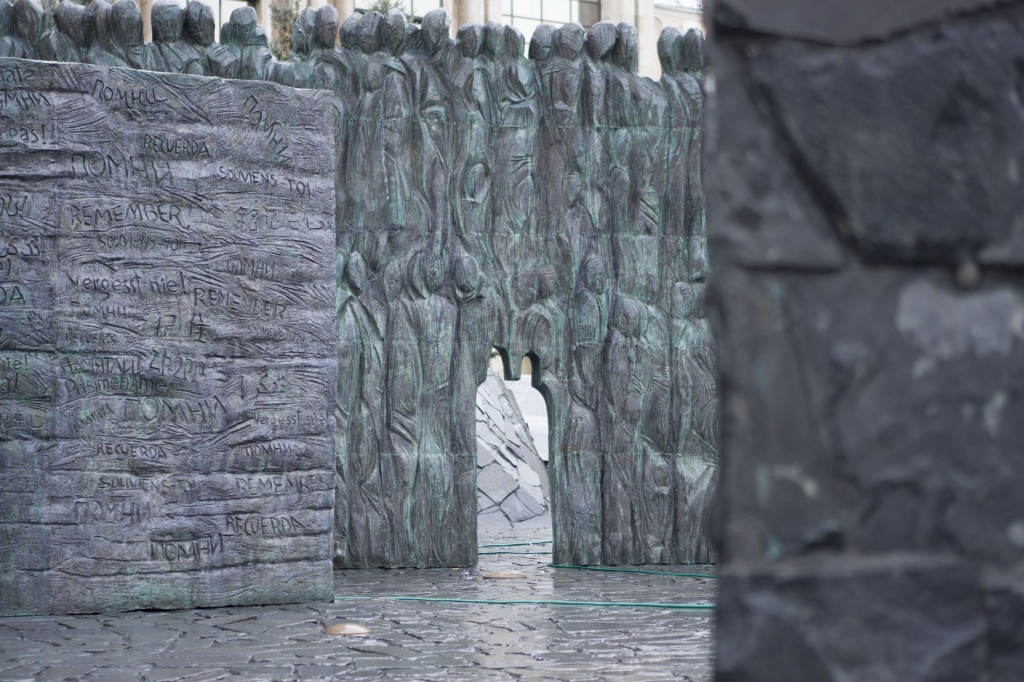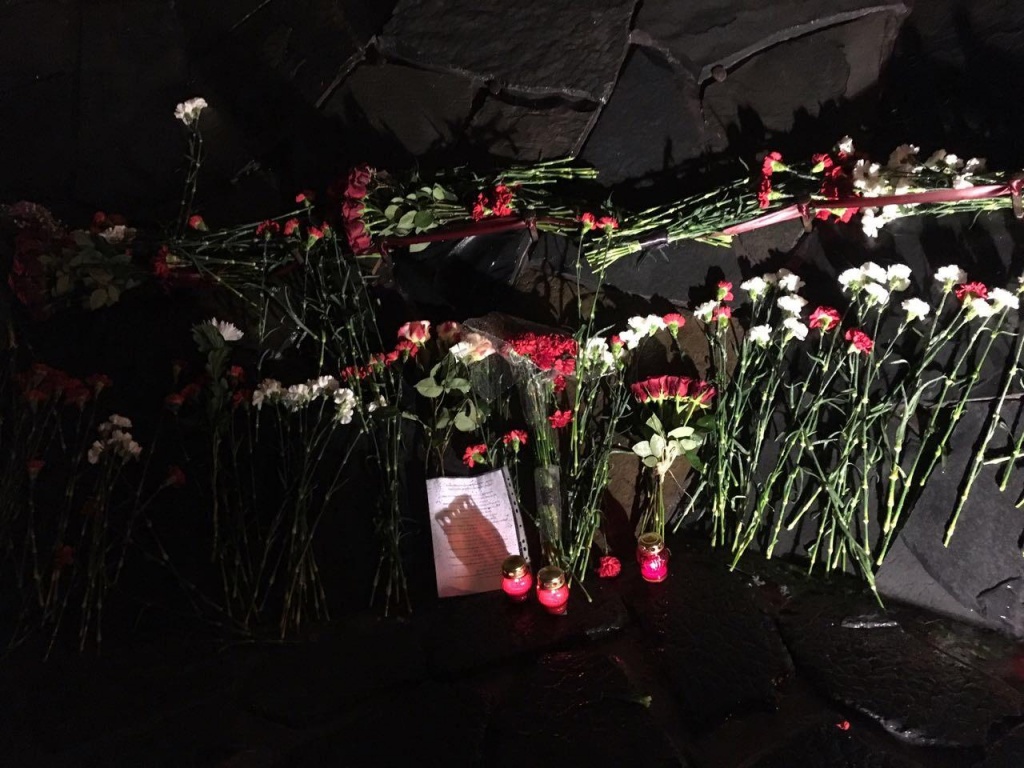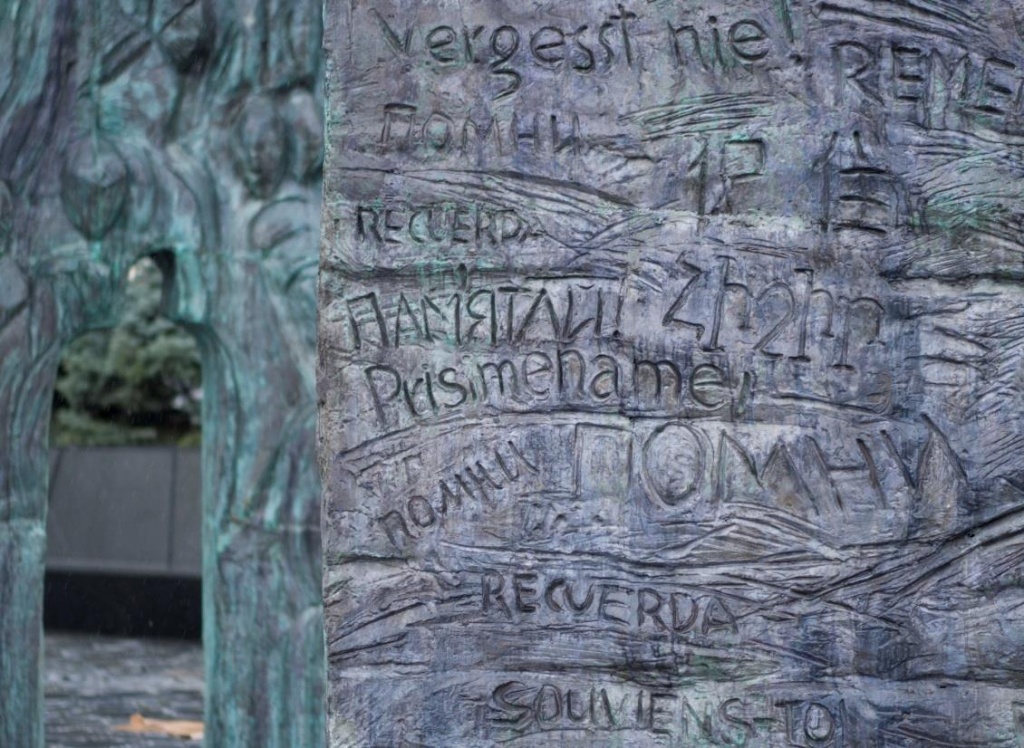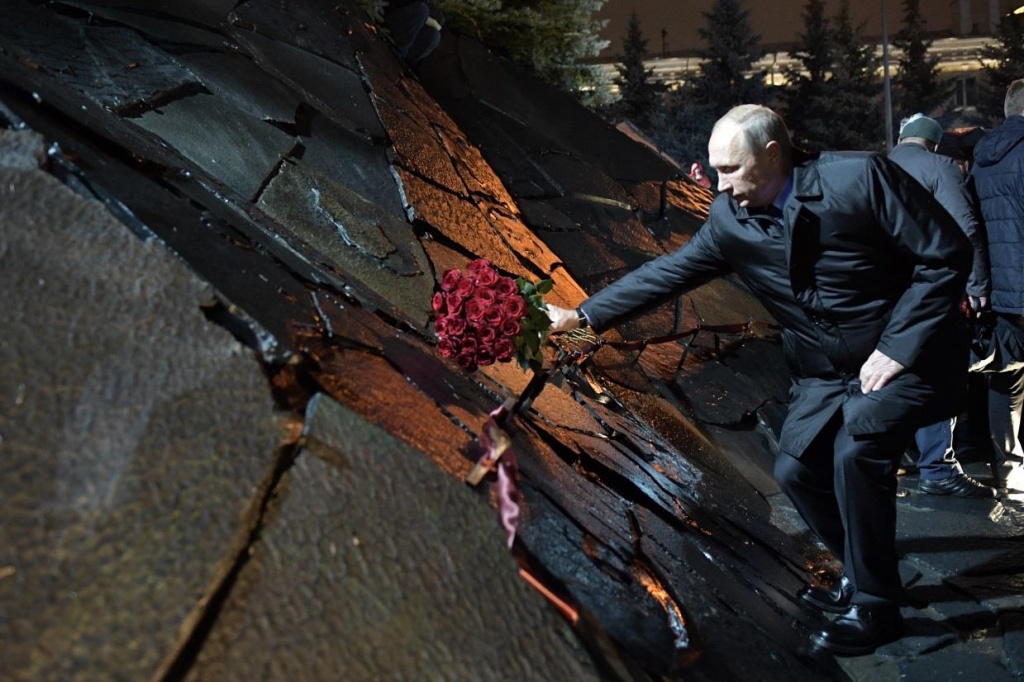KNOW, NEVER FORGET, CONDEMN. AND FORGIVE
Communication campaign in support of the opening in Moscow of "The Wall of Grief", the first national memorial to the victims of political repression
The one-year project was designed to attract public attention to the history of repression in Russia: certain episodes of the country’s past should be always kept in people’s memory in order to avoid their repetition in the future. In 2018, the project won the “Silver Archer” Award for the best charity project, the Grand Prix of PROBA ICCO Global PR Awards and the Silver Prize of the PRGN Best Practice Awards.
BACKGROUND
The topic of mass repression that took place all over the Soviet Union in the first half of the 20th century is still a matter of argument and controversy in the Russian society. There is no general consensus about this part of the national history. Opinion polls show that a large part of the population (about 40%) still considers that mass repression were necessary and justified.
Despite the fact that millions of people went through the GULAG system, millions died and that repression affected almost every family in the country, the society is still unable to talk about this topic.
The nation is split on the issue, and against this backdrop the Russian government approved in August 2015 the State Policy to Commemorate the Memory of Victims of Political Repression and the Russian President signed the Order “About the Implementation of a Memorial of Political Repression Victims.” This became reality thanks to the long-term work of public figures and human rights activists who have devoted themselves to commemorating victims of political repression.
The goal of the project was the reconciliation of the society in relation to the tragic pages of the Russian history in order to avoid their repetition in the future.
The design competition for the memorial was won by sculptor Georgy Frangulyan with the monument “The Wall of Grief.”

In 2016, the Memory Fund was established to support educational and research programs and activities aimed at commemorating the memory of mass repression victims. “The Wall of Grief” memorial became its first large-scale project: the Fund coordinated all the works related to the construction, conducted a public fundraising campaign and secured communication support for the project in general. The Moscow Government and the Presidential Executive Office also provided comprehensive support to the project.
The Fund’s communication campaign was designed to draw public attention to the topic of remembrance of the mass repression victims. The society needed to be prepared for the appearance of such a monument in Moscow. It was necessary to channel discussions about the attitude to political repression, making it unacceptable regardless of the political situation, views and beliefs.
The super-idea of the campaign was to establish social consensus about of the large scale of the tragedy that the country lived through with the sole goal of preventing its repetition in the future.
The project’s communication strategy and its implementation were done by the team of the Memory Fund, the Gulag History Museum and CROS. Taking into account the nature and social significance of the project, the CROS team participated in the project on a pro bono basis.

MISSION
We had to:
- Draw public attention to commemorating victims of repression and raise popular awareness about the history of repression in general;
- Establish favorable media landscape around the opening of “The Wall of Grief” memorial;
- Engage wider audiences in the fundraising campaign for the memorial’s construction;
- Prepare the population for the appearance in Moscow of a memorial to victims of political repression;
- Secure support of public authorities and social activists for the memorial’s construction;
- Establish positive guidelines for public discussions: repression is unacceptable regardless of the political situation, views and beliefs;
- Demonstrate the scale of repression, its mass character and indiscriminate character.
The ultimate goal of the communication campaign was to foster the culture of remembrance for victims of mass repression.

STRATEGY
The development of the project’s communication strategy started with a public opinion research, analysis of the media landscape and evaluation of the possible risks. This work allowed to come up with a certain approach to communications and to choose particular instruments.
It was important to consider the fact that it was a nonprofit project that should have been based on developing partner relations with the media, NGOs and nonprofit organizations, philanthropists and sponsors, public authorities.
Construction of the memorial and establishment of the Memory Fund together were the first project in the modern history of Russia, initiated by the society and supported by the state. The project had the goal of making commemoration of political repression victims a universal and nation-wide movement. One the one hand, it required the communication campaign to have as broad coverage as possible, and on the other hand, it had to have minimal and absolutely transparent costs since its implementation actually used private donations.
The communication campaign was linked to the sad anniversaries of 2017: the 100th anniversary of the revolution and the 80th anniversary of the “Great Purge.” The campaign was designed to have an extensive agenda with cultural and educational events aimed at commemorating victims of political repression before the opening of the first national memorial to political repression victims “The Wall of Grief” on 30 October 2017, the national day of remembrance of the victims of political repression.
“Know, never forget, condemn. And forgive” – these words by Natalia Solzhenitsyna, pronounced at one of the press events, reflect in the best way the core idea of the project and were used as the slogan of the campaign.
The official opening of “The Wall of Grief” memorial with the participation of the Russian President Vladimir Putin was the pinnacle event of the campaign.
Key tactics:
- Engaging in the campaign public opinion leaders, including experts, human rights activists, public figures, representatives of culture and arts.
- “Talking about terror without strain” – the campaign used very modest yet extremely expressive symbols, visualization and verbalization.
- Positioning the memorial’s creation as one of the main projects of the year in which anybody can take part.
- Using in communications only facts (social studies, historical documents and artefacts).
- “Head-to-head talk” in building communications with the audience.
WHAT HAS BEEN DONE
All projects within the communication campaign were implemented as pro bono partner agreements.
The Memory Fund partnered with:
- Kommersant, Rossiyskaya Gazeta, Novaya Gazeta, Moscow 24, TASS; Russian Public Opinion Research Center (VCIOM);
- "Moscow House of Books";
- The Higher School of Economics (HSE University).
Video Interviews with Opinion Leaders
Over 15 video interviews were recorded with many prominent and distinctive Russian people, including Pavel Lungin, Yevgeny Mironov, Vladimir Pozner, Andrei Makarevich, Leonid Parfyonov, Ilya Lagutenko and others. They shared their thoughts about repression and the importance of keeping the memory of the innocent victims.



Pop-up Exhibition “The Wall of Grief”
“The Wall of Grief” pop-up exhibition was held in 10 cities of Russia. It was visited by over 30 000 people. The opening ceremonies were attended by the local top-level officials. The exhibition was mentioned in over 1000 articles in the media, mostly regional outlets.
“Time to Gather Stones” All-Russian Campaign
The Memory Fund organized the national campaign to gather natural stone from places linked with the history of repression from all over Russia. 58 regions supplied 173 pieces of stone that became parts of “The Wall of Grief” memorial.

Media Relations
Regular media events were held as part of the campaign to provide details about different aspects of the project’s implementation. All media events of the Memory Fund were regularly attended by representatives of the leading federal TV channels and other media (Channel One, Rossiya 1, Rossiya 24, TVC, NTV, Rossiyskaya Gazeta, Kommersant, etc.).
-
Press conferences
- Launch of the public fundraising campaign to build “The Wall of Grief” memorial, 30 November 2016.
- Announcement of events in support of the opening of “The Wall of Grief”, progress report on the fundraising campaign, 25 April 2017.
- “The Wall of Grief”: reporting on the project results; announcement of further projects, 25 October 2017.
-
Press trips


- Press trip to the foundry of Georgy Frangulyan in the Moscow region. Journalists were the first to see the monument most of which has already been assembled, as well as casting of its individual elements.
- Organization of the media coverage of the monument’s delivery from the workshop in the Moscow region to the site in the center of Moscow.
- “Time to Gather Stones” – a press event summarizing results of the nationwide campaign to collect stones from the camp sites: a total of 173 stones were delivered to Moscow to become parts of “The Wall of Grief” memorial.


Presentations of joint polls with VCIOM
The joint project of the Memory Fund and the Russian Public Opinion Research Center included a series of public opinion polls about attitude towards the mass repression of the 20th century. The main goal of the research was to get a comprehensive picture of what Russians think about the scale and the character of repression, the role of the state’s leadership in its organization.


Partnership with the “Moscow House of Books”
Launch of a long-term partnership program with the “Moscow House of Books”. The project includes a series of lectures, meet-the-author nights and stands with specialized literature in the largest stores of the chain.


Literature nights at the Higher School of Economics
The project’s goal was to attract attention of younger audiences to the topic of commemorating victims of political repression and the opening of “The Wall of Grief” memorial. Theater and film actors read literature pieces about the political repression of the 20th century during literature nights that were broadcasted online on the websites and in the social media channels of the Memory Fund, the GULAG History Museum and the HSE University. The cycle was opened by Lyudmila Ulitskaya, who read a fragment from her work “Jacob's Ladder”. “Prosveschenie” channel requested the HSE University and the Memory Fund to broadcast the evenings for educational purposes.


Content production and promotion
The Memory Fund aims to speak about repression with various audiences choosing the most appropriate formats. Video films are one of the most engaging and convenient forms of delivering information about the history of repression to audiences in different regions of the country. The Fund supports “My GULAG” project – video interviews with the witnesses of the time. A series of films about research expeditions of the museum was created.
The Memory Fund initiated production of a film about the creation of the first national memorial “The Wall of Grief” for Moscow 24 TV channel. The Fund and the GULAG History Museum provided thematic materials, locations and speakers. The film titled “The Moscow Wall of Grief” was broadcasted in the run-up to the memorial’s opening.
Social advertising in the media and outdoor advertising
- Kommersant newspaper advertising modules.
- Ogoniok magazine advertising modules.
- Banner on www.kommersant.ru.
- 20 digital billboards.
- 240 stickers in the subway.


Digital communications
Communications in the digital media were based on the idea that the story of repression should be told without begging for sympathy. The project’s creative team managed several communities in the social media and produced for them unique content based on historical facts. It was also distributing and adapting the content, created as part of other events of the campaign.
“The Wall of Grief” Memorial Opening Ceremony
Organization of the opening ceremony of “The Wall of Grief” memorial on 30 October 2017 with participation of the country's top leaders was the pinnacle event of the campaign. The project team took part in drafting the ceremony’s scenario, organized participation of repression victims and their families, organized the public part of the ceremony open for everyone who wanted to lay flowers, light candles and commemorate millions who died in repression. Preparations for the ceremony included a range of issues related to musical and visual design of the event, as well as media relations.




RESULTS
The following results were achieved during the one-year communication campaign in support of the opening of the first national memorial to political repression victims “The Wall of Grief”:
- According to a VCIOM, by October 2017 the overwhelming majority of Russians (71%) thought that repression had mass character and was a result of deliberate policy of the USSR leadership. This lets us say that the society is moving towards consensus about repression being unacceptable.
- The Memory Fund raised over 45 mln rubles in donations. The Russian society did not come up to be indifferent to the project: the value of donations ranged from several dozens to several millions of rubles.
- The Memory Fund received President’s grant worth some 2 mln rubles for commemoration projects.
- The Fund’s initiatives to commemorate repression victims were welcomed in the Russian regions. In 2018, the Memory Fund is planning to establish a museum in the former NKVD secret police prison in Tomsk. The Fund will also continue commemoration activities in the Magadan and Irkutsk regions, Chukotka, Yakutia, Karelia and Komi.
- Russian media coverage of the topic of commemorating victims of political repression increased 10 times. Over 2 000 articles were printed in the federal, regional and top tier international media, including over 100 TV broadcasts on the largest federal channels. According to Medialogia monitoring system, the overall reach of publications, TV and radio broadcasts was 140 mln people.
- The total audience of digital communications amounted to 3 mln unique users. Video interviews with top directors, actors, journalists and musicians were viewed over 150 000 times.
The topic of mass repression of the 20th century cannot stand indifference. Thanks to the Memory Fund’s communication campaign in support of the opening of the first national memorial “The Wall of Grief,” people that have never heard about repression learned what it took place, while those who justify them got an opportunity to think again and change their attitude towards the tragedy. Perhaps, it made some people want to learn about the history of their own family.

“For all of us, for the future generations, it is very important to know and remember this tragic period in our history when classes and ethnic groups were made victims of the terrible persecution. Repression did not take mercy on talent, merits to the Fatherland or love for the country. Repression became a tragedy for the whole society, a violent blow on the nation, its roots, culture and self-identity. We still feel its consequences. The terrible past cannot be erased from the national memory. Neither can it be justified. No national welfare can be an excuse for such things. Our duty is not to tolerate oblivion. Remembrance, clear and common judgment of those terrible events are a strong precaution against the repetition of repression.”
Vladimir Putin, President of Russia